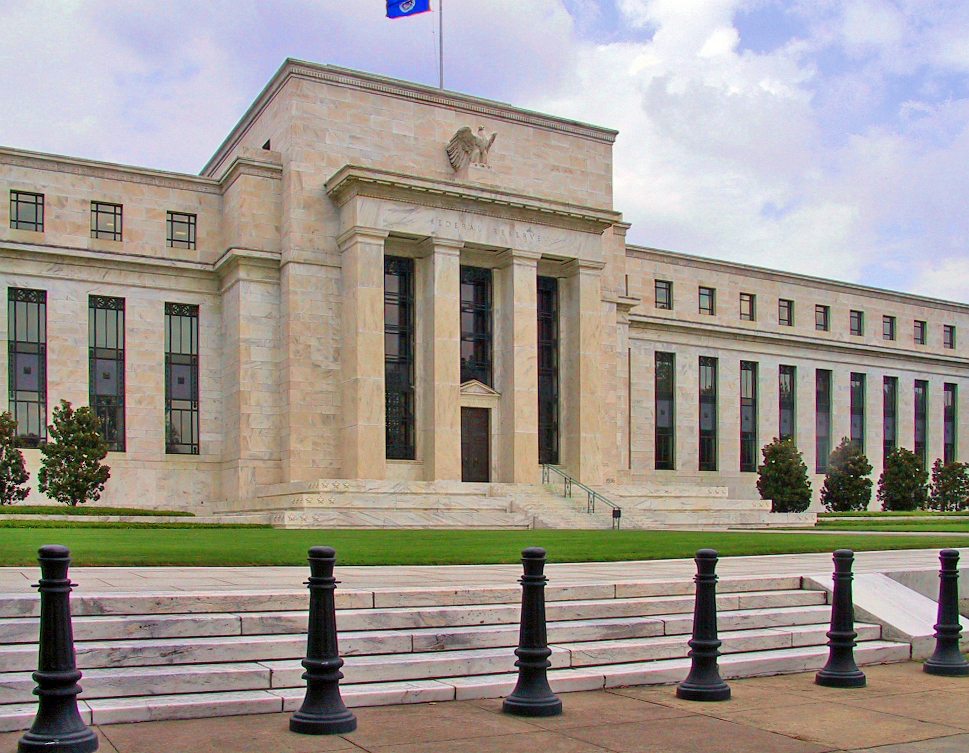Some mornings, I wake up to a string of “Stocks plummet!” alerts that make me want to throw my phone across the room. Between doom-scrolling headlines and overhearing “recession” buzzwords at brunch, it’s easy to feel like your bank account is one bad tweet away from total meltdown. But here’s the truth: panicking never built a safety net. Instead, let’s treat this economic roller-coaster for what it is—a chance to sharpen our financial survival skills. Think of it as leveling up IRL: a little bit of planning now can mean major peace of mind later. So drop the anxiety spiral, stash that latte-fueled guilt, and buckle in. Below, you’ll find 15 practical, straight-talk prep moves to help you ride out whatever comes next—minus the stress.
1. Upgrade Your Skill Set—Like, Yesterday

If the economy catches fire, employers will hunt for people who can add serious value in a snap. The World Economic Forum’s Future of Jobs Report highlights that digital literacy, data analysis, and adaptability are gold this decade . So sign up for that crash course in Python, master a design tool, or level up your public-speaking game. Online platforms like Coursera, Udemy, or LinkedIn Learning practically beg you to binge-learn. These certifications can sit proudly on your resume and LinkedIn header. Even better, many courses offer practical projects you can show off. Employers love proof of hustle more than generic buzzwords.
And here’s the kicker: these skills often pay for themselves via salary bumps or consulting gigs. Imagine getting an extra $500 a month as a freelance data analyst on top of your nine-to-five. You can funnel that into savings or reinvest in more courses. Plus, learning new things keeps your brain from morphing into mush. So carve out an hour a few times a week, turn on some study beats, and watch your career prospects glow. Trust me, future-you will thank present-you for the hustle.
2. Spread Your Bets with Smart Diversification

Putting all your eggs in one basket? That’s so 2020. As Vanguard explains, diversification isn’t about chasing max returns—it’s risk management 101 . By sprinkling assets across stocks, bonds, and even some international exposure, you dodge that heart-attack moment when one sector tanks. Start simple: allocate 60% to equities, 30% to bonds, and 10% to something quirky—think REITs or a bit of gold. Rebalance annually so you’re not accidentally 100% stock-bro this time next year. You don’t need a PhD in finance to pull this off—just a bit of scheduling.
Go whole-hog if you want: toss in a slice of cryptocurrency or peer-to-peer lending to spice things up. Just remember to keep an eye on fees—some exotic assets charge more than your Spotify premium. If international exposure scares you, start with a broad ETF that covers multiple regions. That way, you get diversity without the stress of tracking foreign markets. And when markets get weird—as they often do—having variety is like owning a backstage pass to all the shows. Plus, when one investment underperforms, something else usually picks up the slack. In the long run, this savvy spread can protect your portfolio vibes.
3. Keep Your Inflation Radar On

Looking at price tags lately? They’ve been creeping up faster than rent in the Bay Area. The U.S. Bureau of Labor Statistics reports that the Consumer Price Index ticked up 2.4% over the past year, which is basically taking a flea bath on your purchasing power . Inflation can sneak up like a ninja, so make it a habit to scan monthly CPI releases. You don’t need to become a stats wizard—just check the headlines or set up a simple Google alert. When you see spikes in essentials—food, fuel, shelter—it’s time to pivot your budget. Consider swapping store brands, carpooling, or meal-planning like a parent with a bullet journal. These small moves can shave serious dollars off your monthly bills.
And hey, if you’re feeling fancy, look into TIPS (Treasury Inflation-Protected Securities) or I-bonds for a low-stress hedge against runaway prices. These government-backed tools adjust with inflation so your money doesn’t do a face-plant. Just be mindful of purchase limits and redemption windows. It’s better to know your options before prices skyrocket. Plus, understanding inflation gives you bragging rights at dinner parties—aka, you’ll sound like the savvy friend. Knowledge is power, especially when it keeps your latte budget intact.
4. Build Your Go-To Emergency Fund

According to the Federal Reserve Bank of St. Louis’s FRED, Americans’ personal saving rate hit a multi-year low this spring, which is basically a financial slap in the face if an unexpected blow hits . If you don’t have at least three to six months of expenses squirrelled away, consider it your top priority. Think of this fund as your personal financial seatbelt: if job insecurity spikes or inflation goes full Godzilla, you won’t be left begging relatives for Venmo. Automate weekly transfers of even $20—trust me, you’ll barely notice it missing. It’s fine to treat yourself occasionally, but try to channel your inner monk when it comes to this rainy-day stash.
Plus, watching that little balance grow is oddly therapeutic—swipe right on your savings account! If you can handle upping transfers when your paycheck lands, bump it up by 5%, and watch compounding do its thing. Keep this cash in an easy-access account so you’re not tempted to chase higher yields with junky investments. Resist the urge to tap into it for sneaky splurges like that third streaming service. If you actually stick to it for a year, consider treating yourself to something small and meaningful. That reward loop helps turn frugal into fun. Before you know it, you’ll have a safety net that feels like the ultimate adulting flex.
5. Consider Real Assets as an Inflation Hedge

Paper investments are awesome—until hyper-inflation whispers in your ear. In fact, Goldman Sachs Research notes that gold, real estate, and commodities often shine when currencies falter, with gold expected to rally as much as 16% this year . You don’t have to buy a physical gold bar (though that’s kind of cool). ETFs like GLD or physical-asset funds can give you exposure without a heavy vault at home. For real estate, look at REITs or crowdfunding platforms instead of late-night tenant calls. Even farmland or timberland funds exist if you want to play big-picture. These real assets diversify your portfolio and feel more tangible than digital tickers.
They also hedge against stock market meltdowns and currency devaluations. If commodities shoot up because of supply chain chaos, you’ll be riding that wave. Just watch out for fees and liquidity constraints—some funds can be a bit illiquid. And always check the fund’s track record before jumping in. Real assets aren’t a magic bullet, but they’re a solid addition to your risk-management squad. Plus, bragging about owning a slice of farmland is way cooler than waving around a retirement statement.
6. Renegotiate and Refinance Your Debt

Look, debt can feel like a burr under your saddle. But if interest rates are shifting, you’ve got a golden window to renegotiate. Pick up the phone and call your credit card company, bank, or student-loan servicer and ask for lower rates or better terms. You’ll be surprised how often they say yes—banks love a steady payer. Refinancing high-interest loans into lower-rate options can shave months off your payoff timeline. Use online comparison tools to scout the best deals in a few clicks. Even shaving just one percent off a five-figure loan can save you hundreds in interest.
If you bundle bills—like rolling a home equity loan into your mortgage refinance—you can lock in long-term stability. Just run the numbers to ensure fees don’t eat your savings. And don’t forget about refinancing student loans or personal loans when rates drop. A quicker payoff frees up cash for savings or investments. Once you lock in a killer rate, automate extra payments to shrink the principal. Before you know it, you’ll be debt-digging your way to financial zen.
7. Automate Expenses to Avoid Lifestyle Creep

Lifestyle inflation is real—more avocado toast, pricier lattes, and suddenly you’re broke by the 15th. Automating your essentials is the key to beating the creep. Set up autopay for rent, utilities, insurance, and your emergency fund so bills handle themselves. That way, you never miss a payment or pay silly late fees. Once your must-pays are covered, any leftover cash is fair game for fun. Use budgeting apps that round up purchases and funnel the extra into savings. You’ll barely notice a few spare cents disappearing here and there.
Regularly audit your subscriptions—streaming services, apps, and memberships multiply like rabbits. Cancel the ones you don’t use or find cheaper alternatives. Redirect that cash towards things that really matter, like weekend adventures or skill courses. Automating cuts decision fatigue and keeps your priorities intact. You’ll start meeting the month’s end with a grin instead of sweat. Best of all, automation turns good intentions into habits, effortlessly.
8. Cultivate Multiple Income Streams

Relying on one paycheck is so last century. If the job market hiccups, you want options galore. Brainstorm side gigs or passion projects you can monetize—tutoring, freelance writing, drop-shipping vintage tees, or offering virtual fitness classes. Start small: dedicate an hour a day to side work before or after your main gig. Track your progress in a simple spreadsheet and pivot based on what clicks. Over time, these streams can blossom into reliable backups. Even an extra hundred bucks a month adds serious cushion.
Platforms like Fiverr, Upwork, and Etsy make launching a side hustle easier than ever. You can test market interest with minimal investment and scale up if demand spikes. Diversify your hustle portfolio just like your investments—don’t rely on a single client. And always keep your day job performance strong; good work fosters referrals. When one line dries up, you’ve got others to lean on. Plus, your network and skillset grow with each new venture.
9. Network Like Your Career Depends On It (Because It Does)

In a booming—or crashing—economy, connections are king. It’s not just who you know, but who knows you. Attend virtual meetups, industry conferences, and don’t underestimate the power of a LinkedIn shout-out. Slide into DMs with a genuine compliment or insight instead of a generic “hire me!” Ask for coffee chats (virtual or in-person) and share resources liberally. Networking isn’t a one-and-done; it’s marathon-level relationship work. Keep track of contacts in a spreadsheet so follow-ups don’t slip through the cracks.
A robust network can tip you off to unadvertised gigs or major industry shifts. Keep your elevator pitch crisp and your LinkedIn profile fresh with recent wins. Post relevant articles, comment thoughtfully on peers’ updates, and share your own successes. Generosity begets generosity—send referrals or useful connections first. When you need a favor, people are more likely to help those who’ve helped them. In uncertain times, your network can be your greatest asset.
10. Embrace a Minimalist Mindset

Less stuff means fewer bills and less stress. The minimalist mindset isn’t about giving away everything—it’s about owning what truly adds value. Marie Kondo your closet, digitize documents, and sell or donate items you haven’t touched in a year. A capsule wardrobe experiment can cut decision fatigue and save money. Ask yourself before any purchase: does this item spark joy—or just social media flex? If it’s the latter, walk away. You might be surprised how liberating a cleaner space feels.
A stripped-down lifestyle shrinks your spending baseline, making budget pivots easier if incomes dip. It also frees mental bandwidth to focus on experiences over things. Trade new gadget envy for community classes, hiking trips, or recipe swaps. These activities often cost less and yield deeper satisfaction. Plus, you’ll have fewer material distractions when tracking markets or hustling on side gigs. Minimalism is the ultimate financial hack.
11. Stock Up On “Skills, Not Just Stuff”

You know what lasts longer than that case of canned beans you panic-bought in 2020? Skills. No shade if you love a good stockpile (same), but real talk: knowing how to fix things, cook with scraps, or negotiate like a boss will get you way further than another 12-pack of toilet paper. In tough economies, people who can do things—not just buy things—win. In fact, according to Forbes, investing time into hands-on abilities like basic home repair, cooking, car maintenance, or freelance-ready tech skills can seriously boost your resilience (and maybe even save your wallet when prices spike). Plus, it’s oddly empowering to be able to say, “Yeah, I fixed that myself,” while your bank account quietly applauds you.
Start small: You don’t need to be a full-on YouTube survivalist or whatever. Pick one thing you’ve always meant to learn and actually give it a go—like patching your own jeans instead of hitting “buy now” on a replacement. Bonus points if it’s something you can barter or freelance with later. (Imagine fixing someone’s website or installing shelves for cash when the job market gets weird.) Skills stack up, compound like magic, and can’t be inflated away. No economic crash can take away your ability to fix a faucet or whip up a gourmet meal from a bag of rice and frozen peas. Honestly? That’s some main character energy right there.
12. Keep a Watchful Eye on Policy Moves

Economic policy can flip faster than a TikTok trend, so stay ahead of the curve. Follow Federal Reserve announcements, Treasury updates, and major election outcomes. These moves can foreshadow rate hikes, stimulus packages, or tax changes. Subscribe to concise newsletters like The Economist Espresso or Axios Markets for digestible alerts. Reading long-form analysis is great, but when volatility hits, you need headlines. Even setting up a Google Alert for “Fed rate decision” keeps surprises at bay. Early awareness means you can adjust spending, debt, and investments fast.
If the Fed hints at rate hikes, expect borrowing costs to climb—time to lock in low rates on loans. If fiscal stimulus is incoming, brace for potential inflation and asset-price rallies. Changes in trade policy can affect specific sectors, so tweak your portfolio accordingly. Early signals give you a leg-up versus scrambling in panic. Think of policy tracking as your personal economic weather app. When you know the forecast, you can plan your wardrobe—or in this case, your finances.
13. Build a ‘Bubble Budget’ for Worst-Case Scenarios

What if things really go sideways? Draft a skeleton “bubble budget” that covers only absolute necessities—rent, groceries, utilities, insurance. Subtract those from your income to find your bare-bones break-even point. This exercise reveals exactly how little you need to survive. Knowing this figure means you can pivot instantly if disaster strikes. Keeping luxuries on hold won’t feel like a last-minute scramble. Sometimes imagining worst-case scenarios primes you for calm action. Print or save a copy in a cloud folder so it’s always within reach.
If unemployment or major market corrections hit, activate your bubble budget protocol. Temporarily pause discretionary spending until stability returns. Funnel any freed-up cash into your emergency fund or zero-interest loans. This structured plan prevents emotional overspending in panic mode. You’ll avoid the “Oh no” moment of realizing you’re living paycheck to paycheck. A bubble budget is your financial first-aid kit.
14. Practice Stress-Busting Rituals

Prep all the spreadsheets you want, but stress kills productivity. Incorporate daily rituals—meditation, journaling, walking meetings, or just a quick stretch break—to recalibrate. Apps like Headspace or Calm can guide you if you’re new to mindfulness. Even five minutes of deep breathing between Zoom calls works wonders. And yes, bubble baths at 7 a.m. are totally a thing if they get you centered. Find rituals that fit your vibe—maybe dance breaks or power nap spots. Consistency is key: rituals only pay off if you make them non-negotiable.
A calm mind makes better financial decisions under pressure. You’ll avoid impulse splurges on overpriced comfort food or random retail therapy. Plus, healthy stress outlets preserve your mental health long-term. Swap doom-scrolling for gratitude journaling or a quick nature walk. Pair financial planning sessions with a soothing playlist to stay zen. After all, a chill head handles economic chaos way better than a frazzled one.
15. Celebrate Small Wins to Stay Motivated

Prepping for economic fireworks can feel like a drag, so build in fun checkpoints. Celebrate milestones—hitting savings goals, landing a side gig, or paying off debt chunks. These small wins keep your morale high. Pick low-key rewards—your favorite iced latte, a new book, or a guilt-free streaming binge. Document progress with visual charts or habit-tracker apps for that dopamine hit. Share wins with an accountability buddy or social media story if you’re into that. Public or private cheers help solidify those achievements.
Recognizing progress reminds you why you’re hustling and adulting so hard. It keeps you energized for the next challenge, whether it’s crunching numbers or pitching a client. Plus, it cuts stress—proof that small actions compound into big results. As your accomplishments stack up, your confidence skyrockets. And when the economy finally “explodes,” you’ll be riding high instead of scrambling. Cheers to prepping smart and celebrating every step of the journey!
This article is for informational purposes only and should not be construed as financial advice. Consult a financial professional before making investment or other financial decisions. The author and publisher make no warranties of any kind.









